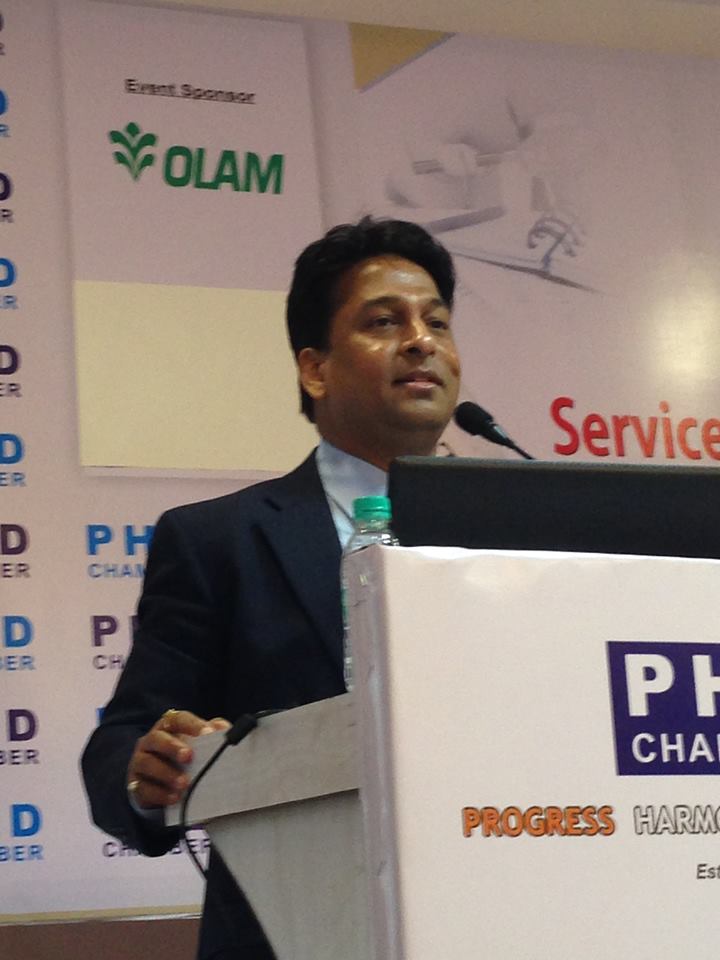The CESTAT, Mumbai in M/S. MORGANITE CRUCIBLE (INDIA) LTD. VERSUS COMMISSIONER OF CENTRAL EXCISE & SERVICE TAX, AURANGABAD - 2023 (6) TMI 554 - CESTAT MUMBAI set aside the order restricting the assessee to avail credit pertaining to one of its units and held that utilization of credit by any unit of the same entity would be revenue neutral since, the credit disallowed to one unit is proportionally available to the second unit and the net credit availment and utilization from a company’s perspective will remain unchanged and assessee is not going to gain anything extra to its entitlement.
Facts:
M/s. Morganite Crucible (India) Ltd (“the Appellant”) is engaged in manufacturing of excisable goods like Silicon Carbide Crucibles, Clay Graphite Crucibles, and spout cement etc., at their factory. The Appellant started manufacturing a new product Die Lube at another unit at different premises with separate Central Excise registration and during the financial year 2012-13 upto August 2014, they had availed CENVAT credit of common services such as Management, Software, Accounting, Auditing, Banking, Trademark, Security, SAP software system used for manufacture and clearance of their final product of Die Lube at that separate premises.
The Department issued a Show Cause Notice dated February 27, 2017 (“the SCN”) demanding INR 3,46,039/- on the grounds that the common input services shall be distributed to all units pro rata on the basis of turnover of such units during the relevant period which the Appellant’s HO has wrongly availed by violating the Rule 7 of the CENVAT Credit Rule, 2004 (“the Cenvat Credit Rule”).
The Adjudicating Authority ordered the recovery of the amount along with interest and penalty.
Aggrieved by the decision of the Adjudicating Authority, the Appellant filed an appeal before the Commissioner of GST & CE (Appeals), who vide Order-in-Appeal No. NSK/EXCUS/000/APPL/567/18-19 dated December 31, 2018 (“the Impugned Order”) upheld the order of Adjudicating Authority.
Aggrieved by the Impugned Order, the Appellant filed an appeal before the CESTAT, Mumbai.
The Appellant contended that the Die Lube unit manufactured excisable goods only and not exempted goods and the invoice pertaining to the input service consumed in the unit were also in the name of the Appellant and therefore the CENVAT credit on the invoices cannot be faulted. The Appellant’s head office is not registered as Input Service Distribution (“ISD”).
Appellant further contended that even if they are not registered as an ISD, the availment of CENVAT credit cannot be denied and the Die Lube unit would be eligible for the credit that was availed by the Appellant and there will be no loss to the revenue and thus it is the revenue neutral case.
Issue:
Whether the Appellant is entitled for CENVAT Credit attribute to common input service utilized in its other unit as per the Cenvat Credit Rule?
Held:
The CESTAT, Mumbai in M/S. MORGANITE CRUCIBLE (INDIA) LTD. VERSUS COMMISSIONER OF CENTRAL EXCISE & SERVICE TAX, AURANGABAD - 2023 (6) TMI 554 - CESTAT MUMBAI held as under:
- Relied, to the judgement of Bombay High Court, THE COMMISSIONER, CENTRAL TAX, PUNE-I COMMISSIONERATE VERSUS M/S. OERLIKON BALZERS COATING INDIA P. LTD. - 2018 (12) TMI 1300 - BOMBAY HIGH COURT wherein the Court, after considering Rule 7, held that as the assessee existed both pre and post-amendment in 2012 was entitled to utilize the CENVAT credit at its one unit only.
- Observed that, Rule 7 prior to the amendment is a discretionary section that does not create an obligation upon the Appellant to distribute. But amended Rule 7 of the Cenvat Credit Rules provides an obligation upon the Appellant to distribute credit among its units.
- Held that, the entire exercise would be revenue neutral as the utilization of credit by any unit of the same entity would not make any loss to the exchequer as the credit disallowed from one unit is proportional to the second unit will be eligible as a credit to such other unit and the net credit availment and utilization from company’s perspective will remain unchanged and also the Appellant is not going to gain anything extra to its entitlement.
- Set aside the Impugned Order.
Relevant Provisions:
Rule 7 of the CENVAT Credit Rules:
Manner of distribution of credit by input service distributor.-The input service distributor shall distribute the CENVAT credit in respect of the service tax paid on the input service to its manufacturing units or unit providing output service or an outsourced manufacturing unit, as defined in Explanation 4, subject to the following conditions, namely :-
(a) the credit distributed against a document referred to in rule 9 does not exceed the amount of service tax paid thereon;
(b) the credit of service tax attributable as input service to a particular unit shall be distributed only to that unit;
(c) the credit of service tax attributable as input service to more than one unit but not to all the units shall be distributed only amongst such units to which the input service is attributable and such distribution shall be pro rata on the basis of the turnover of such units, during the relevant period, to the total turnover of all such units to which such input service is attributable and which are operational in the current year, during the said relevant period;
(d) the credit of service tax attributable as input service to all the units shall be distributed to all the units pro rata on the basis of the turnover of such units during the relevant period to the total turnover of all the units, which are operational in the current year, during the said relevant period;
(Author can be reached at info@a2ztaxcorp.com)
 TaxTMI
TaxTMI  TaxTMI
TaxTMI 